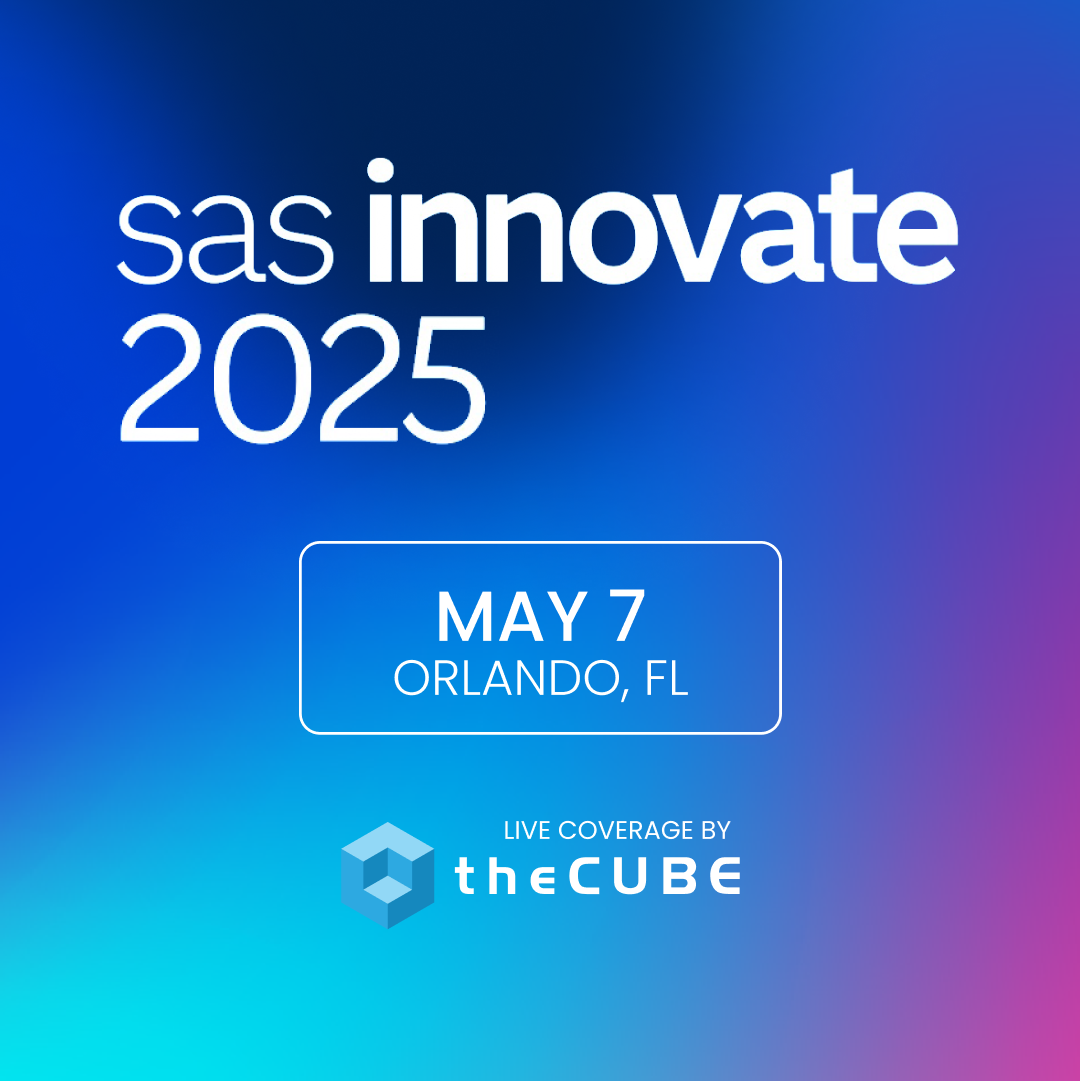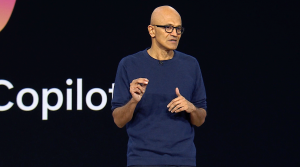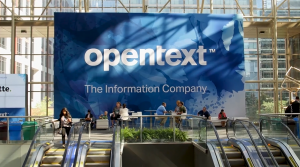Exclusive with AWS chief Andy Jassy: The wakeup call for cloud adoption
Shortly after the COVID-19 pandemic hit in March, many companies had to become digital businesses nearly overnight — and they turned quickly to Amazon.com Inc.’s massive cloud computing business to help them.
Even for Amazon Web Services Inc., by far the leading provider of cloud services, it required scaling up to an unprecedented degree to aid a wide variety of pandemic-related demand for expanded services. Within months, AWS had helped Novetta battle COVID misinformation with spot compute instances, enabled Brain Corp. to expand its software for floor-cleaning robots quickly and provided the cloud foundation for Moderna Inc. to develop its COVID vaccine. In just three months from initial concept, Coca-Cola Co. deployed its Freestyle touchscreen drink kiosks contactless through an app and architecture AWS helped build.
“COVID, while a period that none of us would have wished on anybody or ever want to repeat, will end up accelerating the cloud by a few years,” says AWS Chief Executive Andy Jassy (pictured).
But in an exclusive interview last week ahead of the company’s annual re:Invent conference this week — this year a nearly three-week virtual affair — Jassy told me he still isn’t satisfied. “Anytime we’re not statistically indistinguishable from perfect, we’re going to be unhappy,” he said.
It’s that attitude, in fact, that has kept AWS at the top of the cloud computing business, but it also points up the reality — often mentioned by Jassy and his boss, Amazon.com Inc. CEO Jeff Bezos — that it’s still day one in the company’s impossibly ambitious plans.
And it’s all the more critical for AWS to keep driving for near-perfection today, as the COVID-19 pandemic continues to either wreak havoc on businesses or force them to transform. As businesses struggle to reinvent themselves as fully digital businesses, they’re flocking to the cloud — in many cases, to AWS.
Jassy and I talked for more than an hour in our exclusive pre-re:Invent interview about how he aims to keep AWS on the cutting edge amid increasing competition from the likes of Microsoft Corp. and Google LLC in the market it pioneered nearly a decade and a half ago. He sat for the virtual interview in his home office ahead of the company’s annual user conference, re:Invent, which will run online for nearly three weeks beginning Monday.
Although he was customarily coy about revealing any specifics of AWS’ announcements, Jassy did share his vision and plans for AWS. Of course, with typical Jassy flair, he provided many clues about what he’ll reveal at his show-opening keynote address Tuesday morning, as well as what’s coming in the following weeks on a wide range of fronts, from cloud compute to databases to machine learning services.
My takeaway: AWS Everywhere. AWS is pushing its cloud computing models to all aspects of computing, not just providing storage, servers and networking infrastructure and software. It’s clear that Jassy will lay out how AWS is looking not just to keep leading cloud computing, but to make the cloud the basis for all of the three trillion-dollar-plus information technology industry — 96% of which still resides in on-premises data centers rather than the cloud. “The market segment we really address is the global IT market segment,” he said matter-of-factly.
SiliconANGLE will be running a multipart Q&A series in the coming days and weeks covering the full interview, but several themes leaped out in my interview. Here’s what to expect from Jassy and AWS this week — and in coming years — along with my analysis of what’s really behind where Jassy’s aiming the AWS team.
Re:Inventing 2020
In 2020, everything imploded — racial inequality, political divisiveness and the devastating impact of the COVID pandemic. The magnitude of change thrusted upon businesses and governments everywhere over the past nine months has been extraordinary.
AWS named its annual event “re:Invent” back in 2012, but it seems it is really 2020 that has forced organizations to reinvent fast or risk going out of business.
Jassy has been expounding on the benefits of cloud adoption since I met him back in 2012, just after the first annual re:invent conference, which has become the leading cloud industry conference. But in the wake of the pandemic and the resulting economic downturn, those messages have a whole new sense of urgency and Jassy has additional insight for leaders, as he explained to me during our interview for SiliconANGLE.
This year Jassy sees re:Invent as a global call to action, especially as companies will either survive and thrive or struggle and fail based on how well they implement that transformation.
Jassy reminded me that throughout 2020, successful digital transformation, enabled by building a strong foundation on cloud technology, has been on full display. Others, who have delayed their digital transformations or are holding on to legacy technologies and processes are facing disruption or irrelevance.
One thing is certain: 2020 has been a giant wakeup call for cloud adoption and digital transformation. As with any wakeup call, the choice is to either face the truth and change rapidly or wither in the eventual decline. According to Jassy, “it is hard for any company to sustain for long periods of time, but the best way to inoculate yourself is to listen to customers and have the right foundation to keep reinventing your products and services for your customers.”
And he added, “If you’re not in the process of figuring out as a company how you’re going to reinvent your customer experience and reinvent who you are, you are starting to unwind. You may not realize it, but you are.”
Digital transformation accelerating to AWS
In a recent video interview with thought leader Sarbjeeet Johal, Dion Hinchcliffe, vice president and principal analyst at Constellation Research, pointed out that top chief information officers are in the process of quickly approving and advancing digital transformation projects and bringing them to maturity with automation and machine learning then converting them into long-term plans. “The top 100 enterprise CIOs all think the world will not go back to the way it was before COVID,” said Hinchcliffe.
Accelerated adoption of cloud computing is consistent with what Jassy says he is seeing from customers. AWS is now running at a $46 billion run rate, growing 29% over last year. As impressive as that revenue and growth rate is, there’s still so much more that remains to be done. If you run the numbers as I have, cloud is just 4% to 6% of global IT spending. The rest of those trillions are spent for on-premises software, hardware and services.
Gartner pegs AWS market share within the infrastructure-as-a-service and platform-as-a-service market at 45%, more than double the next largest cloud provider. AWS clearly won and continues to win in the IaaS and PaaS market. but the majority of digital transformation is still yet to come. “If you look at the global IT segment… 96% of those dollars are spent on-premises, not in the cloud,” said Jassy.
Redefining ‘hybrid cloud’
To win the global IT market, you have to win the hybrid cloud game. And that is exactly what Jassy and the team are going for. “If you look at the definition of hybrid, I think people assume that the definition of hybrid is set. Because it was set many years ago by data center infrastructure technology providers who were trying to sell existing on-premises solutions. “But I think that the definition of hybrid, in my opinion, is moving pretty quickly, and evolving and being reinvented as we speak.”
Hybrid cloud was a term invented by traditional enterprise suppliers or non-cloud companies to position the public cloud as “the overflow” solution for on-premises workloads. At that time the notion was clear, but I even got a push back from Pat Gelsinger, CEO of VMware Inc., at VMworld in 2013 when I called hybrid cloud a halfway house to the cloud.
For Jassy and AWS, many people misunderstand “hybrid” because they misunderstand “on-premises.” I asked Jassy about why many think AWS is only about the public cloud.
“Back then we made a very strong statement, which I would say we believe even more strongly now, which is that in the fullness of time, the vast majority of companies won’t have on-premises data centers, and those that do will have much smaller footprints than they have today,” he explained. “The overwhelming majority of computing is moving to the cloud, but for 10 years we’ve been building what we think are sensible bridges to on-premises footprints, because we always knew it would take a long amount of time for that transition to happen.”
I pressed him on what kinds of bridges specifically. “VPC, Direct Connect and Storage Gateway, to name just three, but then we started thinking about hybrid as including various edge nodes, on-premises data centers being one of them, and the way that customers want to consume hybrid offering with the same interfaces, APIs, control planes, tools, and hardware they run in the cloud,” Jassy added.
So given all that, I pressed Jassy on what is today’s version of hybrid cloud. “To me, hybrid is the cloud alongside any edge node where you can run computing on-premises such as data centers, stores, restaurants, hospitals, the battlefield, agricultural field, mine shaft,” he said. “Customers want us to distribute AWS to those various edge nodes where they can use it in a way where it’s the same APIs, the same control plane, the same tools, the same hardware, and use it consistently.”
This view of hybrid is very different from how the industry often (mis)uses that term. According to Jassy, “We think of hybrid as including the cloud along with various other edge nodes (including on-premises data centers). ‘Edge’ and ‘hybrid’ are terms that are starting to merge together.”
Jassy’s take on hybrid wasn’t lost on Dave Vellante, an analyst at SiliconANGLE sister market research firm and creator of SiliconANGLE’s Breaking Analysis: “AWS is bringing their cloud to on-premises and, yes, most and or all companies will convert to cloud but it is all just one connected footprint running cloud software, APIs, etc. Basically, it’s cloud operations everywhere,” says Vellante.
Reinventing compute with new chips
Wherever enterprises choose to run their workloads, computing power is the lifeblood for digital transformation. Without innovation in both computing power and the very definition of computing, some things we take for granted – from helping researchers find a vaccine for COVID, to employees working safely from home, to consumers getting food delivered to their home – wouldn’t be possible.
So in 2015, AWS acquired Annapurna Labs to accelerate its work with building custom chips followed by the launch of the AWS Nitro System in 2017, which was AWS’s own version of the hypervisor and underlying compute platform for the cloud.
Since then AWS has been hard at work, Jassy says, to reinvent compute across all the ways that customers power their applications in the cloud today – EC2 instances, containers, and serverless. Even with what Jassy claims was already the broadest and most powerful array of instance types available in the cloud, AWS developed its 2nd generation silicon chip, Graviton2, because, “AWS wanted to make a big difference for a lot of customers.” The company says its Arm-based Graviton2 delivers up to 40% better price performance than comparable x86-based instances.
According to Jassy, customers are flocking to AWS for a faster, more secure compute and all that it enables. “Customers have adopted Graviton2 instances a lot quicker than even we thought,” Jassy notes. “We have customers trying to move as many workloads as they can as quickly as possible to these Graviton2 instances.”
But it isn’t just the more traditional way of running compute that is being reinvented, Jassy notes, it’s happening in containers, where it’s easier to mover smaller chunks of compute around, and serverless, where you don’t even have to think about managing servers. “The smaller units of compute are also growing at a very rapid clip in containers and serverless,” says Jassy
One reason for that rapid growth in containers, according to Jassy, is the choice AWS offers. Not only is AWS focused on making those container instances faster with Graviton2 and by other means, it also offers a wider range of ways to run them, he says, “most providers that have a single container offering, which is a managed Kubernetes service. But because different developers and teams have different tastes and needs, AWS offers a managed Kubernetes service (EKS) and a managed containers service with deep integration into other AWS services (ECS), and for those that want to run containers ‘without thinking about servers or clusters,’ then you run Fargate,” Jassy suggests.
In the world of serverless, AWS and their customers are both adopting this idea of serverless as the preferred approach to building applications. In 2020, nearly half of the new applications that Amazon developed were built on top of AWS Lambda’s serverless compute. For Jassy, he believes this trend will continue to expand. “The next generation of developers are going to grow up building in this serverless fashion.”
More databases for even more data
Data is the heart of reinvention and, not surprisingly, Jassy feels incumbent enterprise suppliers make such data reinvention harder, not easier. AWS loves to point out that traditional databases are extremely complex, require large stff on-premise to manage, are proprietary and aim to lock customers in.
Now that cloud computing has captured the enterprise market, the question about costs and database licenses become the topic of conversation as many traditional companies run on relational databases, mostly powered by Microsoft SQL Server or Oracle Database.
“Those relational databases are not appropriate for a lot of workloads,” he said. “If you look at Oracle and Microsoft, their offerings are expensive, proprietary, have high amounts of lock-in and they have licensing terms that are really punitive. Those vendors are constantly auditing their customers.”
Jassy also called out competitors’ “slick” sales tactics whose entire purpose, he says, is to extract more money from customers. They start with an audit that finds various violations followed by an offer to let you “off the hook” if you buy more from them.
Jassy makes it clear he opposes those old-school enterprise sales shenanigans. “I think those companies have no qualms about changing the licensing terms midstream to benefit themselves,” he charged. “Just look at what Microsoft did with SQL Server over the last year or two where they basically told customers who had bought SQL Server licenses that they couldn’t use them on any other cloud than Microsoft.”
Jassy believes it’s shortsighted by Microsoft’s and that their customers will flee the first chance they get something else. In fact, he said, “we have an accelerating number of customers who are looking to move away, not just from Oracle, but from SQL Server, because they’re really sick of what’s happening, and they don’t trust those companies anymore.”
Jassy points out that a lot of these customers are choosing Amazon Aurora, Amazon’s RDS for MySQL and RDS for PostgreSQL compatible relational database, which he claims is AWS’s fastest-growing service ever. Aurora combines the performance and availability of high-end commercial databases with the simplicity and cost-effectiveness of open source databases.
Data growth and relevance as a key problem many enterprises have in trying to unlock value and Jassy sees this as a big opportunity for AWS to solve. “People realize that relational databases are more expensive and complex and overkill for what they need for a lot of use cases, and that they’re better off with purpose-built databases like key-value stores, in-memory databases, graph databases, time series databases or document databases,” he said.
Democratizing machine learning and AI
One area that is ripe for reinvention, even in its relative infancy, is machine learning and artificial intelligence. Machine learning has become so popular that it’s being embedded in most and soon to be all data-driven applications. Most analysts agree that a majority of applications will be infused with machine learning in the next five to 10 years.
When pressed on the company’s focus, Jassy talks about the spectrum of users, from the expert practitioner to a business user. Basically, he’s saying AWS wants to democratize machine learning and AI. That’s reinvention in a market that’s still evolving at a rapid clip.
AWS has a clear machine learning strategy, according to Jassy. It’s focused on supporting machine learning experts, practitioners, everyday developers, and applications by making everything faster and easier for them.
One thing that is becoming increasing clear Jassy says is that “people hire products and services to do a job. They don’t really care what you do under the covers.”
Jassy continued, “What we’re finding is that increasingly we’re using machine learning as the source to get those jobs done, but without people necessarily knowing that that’s what we’re doing behind the scenes, they’re just seeing the job getting done.”
That said, AWS itself is working behind the scenes to make that job easier. Two years ago, TensorFlow, originally developed by Google, was the main game in town for machine learning frameworks. Today, PyTorch, originally developed at Facebook Inc., has caught up with TensorFlow, according to Jassy, and the two together are the dominant machine learning frameworks that customers are adopting.
“We have dedicated teams who do nothing but work on each of those frameworks for customers, to optimize the performance,” Jassy said. “This has resulted in better performance running on AWS than anywhere else.”
Managing cloud transformations in the COVID era
Digital transformation isn’t about machines or speeds and feeds, but about the people. And Jassy thinks people in every organization are realizing these tough times are pushing them to a better place.
“COVID, while a period that none of us would have wished on anybody or ever want to repeat, will in the next 12 months end up accelerating cloud computing by years,” he said. That’s because the cloud has allowed a lot of companies to invent and change at a much more rapid pace than before.
Jassy sees AWS connecting with its existing customers more during the pandemic and landing new customers that are jumping on the cloud to save their companies. But to be successful, enterprises need leaders to stand up and make a difference.
“If you’re a leader and you’re running a company either as the CEO or as one of the senior leaders, if you’re not thinking about how to build a culture and how to operate in a way where you know how to reinvent, giving your developers and builders the tools to reinvent the customer experience, your business is going to have big trouble,” Jassy declared.
COVID has obliterated the idea that companies can “toe dip” their way to cloud success. “A very large number of those companies that have been talking about moving to the cloud have shifted to having real plans around moving to the cloud and having real migration plans,” he said.
The key, he said, is that leaders need to think about reinvention proactively. “As a leader, you got to be great at getting at the truth of where you have problems with your customers and in the market,” he said. “Leaders also need the courage to lead the team to make a big change.” That change, he continued, is like gravity: “The truth is that if something’s going to happen because technology enables it, whether you want it to or not, whether it’s convenient or not, it is going to happen.”
So great leaders have the “the will to get to the truth, the will to invent, the will to not fight gravity.” And, he added, “you need the right lean-forward people on your team that wants to invent.”
Often it’s when long-timers at a company leave that “those companies actually start to reinvent themselves,” Jassy noted. “It’s not that you can’t reinvent if you have people who’ve been there a long time. It’s just harder for people who have been doing things the same way for a long period of time to change and to want to change. They’re proud of what they built and they’re not sure they want to learn new things.”
In Jassy’s view, it’s time to invent, and then reinvent. COVID has made this clear, but for those already in the born in the cloud, it has been obvious for years.
Now, it’s apparent to the rest of us. That’s why Jassy’s job right now is to take AWS everywhere.
Photo: Christian Purdie
A message from John Furrier, co-founder of SiliconANGLE:
Your vote of support is important to us and it helps us keep the content FREE.
One click below supports our mission to provide free, deep, and relevant content.
Join our community on YouTube
Join the community that includes more than 15,000 #CubeAlumni experts, including Amazon.com CEO Andy Jassy, Dell Technologies founder and CEO Michael Dell, Intel CEO Pat Gelsinger, and many more luminaries and experts.
THANK YOU













